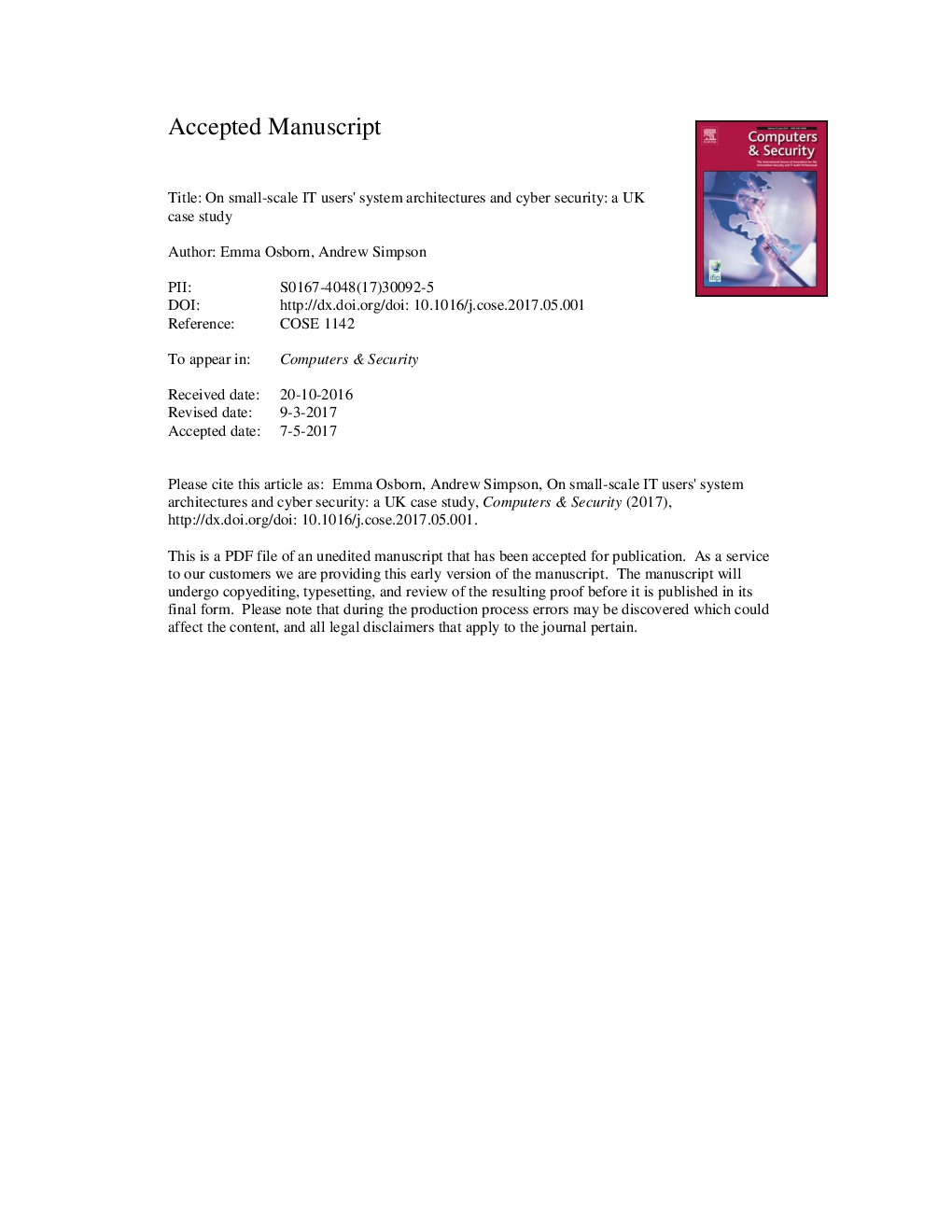| Article ID | Journal | Published Year | Pages | File Type |
|---|---|---|---|---|
| 4955407 | Computers & Security | 2017 | 50 Pages |
Abstract
Despite long-standing predictions that developments in, for example, personal and cloud computing practices would change the ways in which we approach security, small-scale IT users (SSITUs) remain ill-served by existing cyber security practices. Following an extensive study of the adoption of cyber security in UK-based SSITUs, this paper discusses results pertaining to technologies employed by such organisations, with respect to their ability to apply security measures. We determine: that the system architectures employed by SSITUs are significantly different from those employed by large corporate or government entities; that the architecture of a small organisation's digital footprint has far more impact on their overall security than would be the case for a large organisation; and that SSITUs do not hold sufficient influence within the supply chain to manage cyber security in their interactions with service providers. We show that improving small-scale cyber security architectures is not simply about developing new technology; rather, there are additional needs to consider, including technology use in the context of interactions that occur within a broader ecosystem of a supply chain, users with multiple roles, and the impact of the digital footprint on security.
Related Topics
Physical Sciences and Engineering
Computer Science
Computer Networks and Communications
Authors
Emma Osborn, Andrew Simpson,
